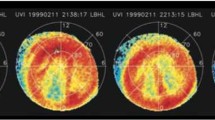Abstract
Carl Størmer was a pioneer in the study of the aurora borealis, a mathematician who derived the conditions for the formation of aurora and their trajectories in the atmosphere, making seminal contributions to auroral and space science. He was the first to develop precise photographic methods to calculate the heights and morphologies of diverse auroral forms from observations over four solar cycles (45 years). Størmer independently devised numerical techniques to determine the allowed and forbidden trajectories of high-energy charged particles in the Earth’s magnetic field. His theoretical calculations also explained cosmic ray access to the upper atmosphere, 20 years before this was identified by other scientists. His interactions and contributions in the nascent stages of modern geomagnetism are outstanding. The breadth and scope of his theoretical and observational achievements are monumental even by modern standards. His major work, The Polar Aurora [1], published in two volumes when he was 81 years old, stands to this day as a valued resource in graduate-level courses on space physics.
Similar content being viewed by others
Suggested Reading
C Størmer, The Polar Aurora, Oxford University Press, pp.xvii, 403; 216 Figs., 27 Tables. 55s, 1955.
S Chapman, Carl Størmer in Biographical Memoirs of Fellows of the Royal Society, 1958, https://doi.org/10.1002/qj.49708235123.
A Egeland and W Burke, Carl Størmer: Auroral Pioneer, Springer Astrophysics and Space Science Library 393, 2012.
Egeland and Burke, Kristian Birkeland’s pioneering investigations of geomagnetic disturbances, History of Geo- and Space Sciences, Vol.1, No.1, pp.13–24, 04/2010.
https://www.jhuapl.edu/Content/techdigest/pdf/APL-V06-N02/APL-06-02-Zmuda.pdf.
J V Shebalin, Størmer regions for axisymmetric magnetic multipole fields, Physics of Plasmas, Vol.11, No.7, pp.3472–3482, 2004, DOI: https://doi.org/10.1063/1.1752931.
O O Tsareva, Generalization of Størmer theory for an axisymmetric superposition of dipole and quadrupole fields, Journal of Geophysical Research: Space Physics, Vol.124, pp.2844–2853, 2019, https://doi.org/10.1029/2018JA026164.
A S Lavrukhin, I I Alexeev and I V Tyutin, Influence of the Earth’s ring current strength on Størmer’s allowed and forbidden regions of charged particle motion, Ann. Geophys., Vol.37, pp.535–547, 2019, https://doi.org/10.5194/angeo-37-535-2019.
C Størmer, Progress in the photography of the aurora borealis, JGR, Vol.37, No.4, pp.475–477, December 1932, https://doi.org/10.1029/TE037i004p00475.
G Le, C T Russell and K Takahashi, Morphology of the ring current derived from magnetic field observations, Annales Geophysicae, Vol.22, pp.1267–1295, 2004, S Ref-ID: 1432-0576/ag/2004-22-1267©.
Images in public domain: https://skyandtelescope.org/observing/celestial-objects-to-watch/aurora/; https://www.discover-the-world.com/northern-lights/; https://www.aurorahunter.com/northern-lights-forecast.html; https://www.travelandleisure.com/trip-ideas/nature-travel/best-places-to-see-the-northern-lights.
S Chapman, V C A Ferraro, A new theory of magnetic storms, J. Geophys. Res., Vol.36, No.3, pp.171–186, September 1931, https://doi.org/10.1029/TE036i003p00171.
S Chapman and J Bartels, Geomagnetism, 2 Volumes, pp.xxviii, 1049, 63s, Oxford University Press, 1940.
C Størmer, Photographic measurements of the great aurora of January 25–26, Nature, 141, pp.955–957, 1938, https://doi.org/10.1038/141955a0.
Joseph W. Chamberlain, Theories of aurora, Advances in Geophysics, Vol.4, pp.109–215, 1958, https://doi.org/10.1016/S0065-2687(08)60485-9.
M E Koepke, Interrelated laboratory and space plasma experiments, Advances in Geophysics, Vol.4, pp.109–215, 1958, https://doi.org/10.1029/2005RG000168.
J J O’Connor and E F Robertson, https://www-history.mcs.st-and.ac.uk/Biographies/Strmer.html.
http://racingnelliebly.com/weirdscience/carl-Strmer-victorian-era-spy-camera/.
Acknowledgement
Thanks to Prof. K Indulekha and Prof. Rajaram Nityananda for their helpful inputs. Public documentation of lives of eminent Norwegians in the National Library of Norway, proved a very good resource.
Author information
Authors and Affiliations
Corresponding author
Additional information
Nandini Nagarajan is a geophysicist who has spent over 40 years in studies of geomagnetism covering commissioning of observatories, low-latitude geomagnetic phenomena, magnetotelluric field campaigns and studies of electromagnetic induction for crustal structure and resource exploration. She has worked at the Indian Institute of Geomagnetism and National Geophysical Research Institute.
Note
Though some important work of Størmer has been cited, most of it is inaccessible. Biographies, and reviews are the main sources.
Rights and permissions
About this article
Cite this article
Nagarajan, N. Unravelling the Aurora Borealis. Reson 27, 713–731 (2022). https://doi.org/10.1007/s12045-022-1367-5
Published:
Issue Date:
DOI: https://doi.org/10.1007/s12045-022-1367-5




